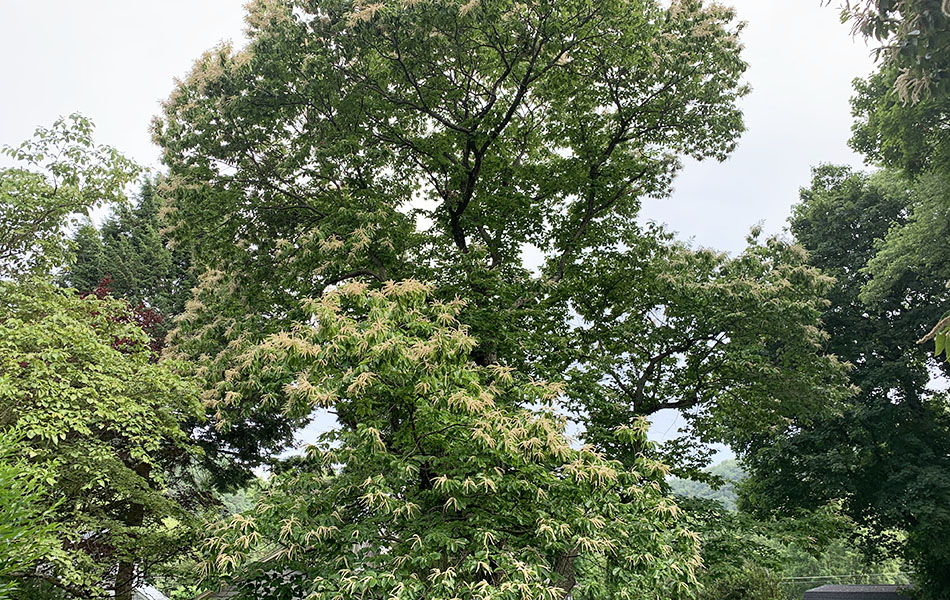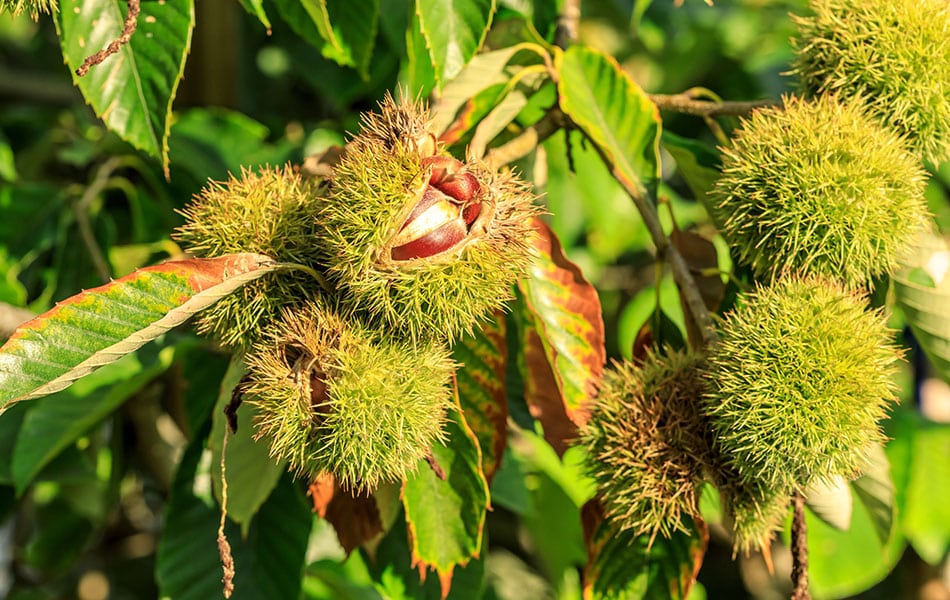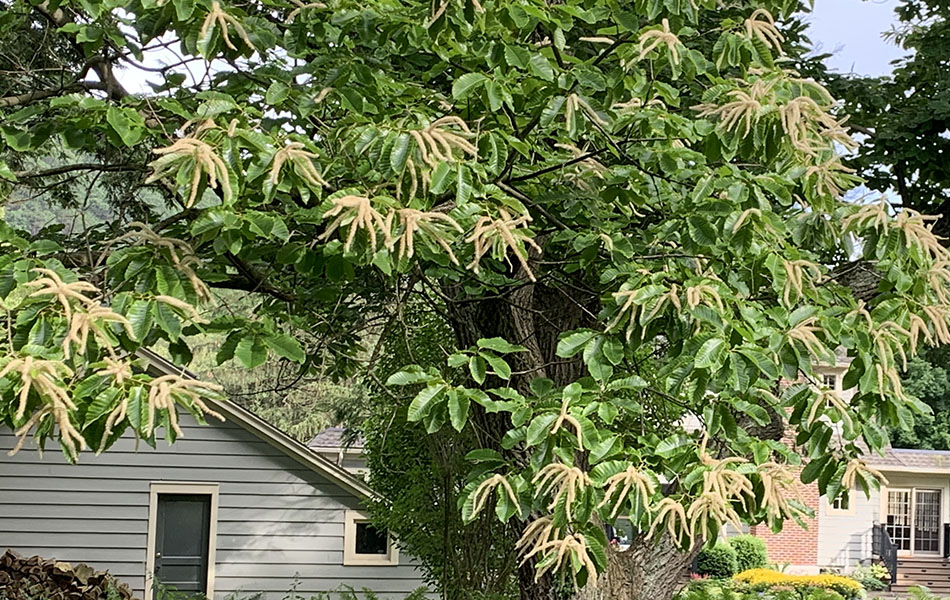Chinese Chestnut at a Glance
Hardiness: Zones 4 – 8
Shape: Round, with a spreading canopy and often multi-stemmed
Mature Size: Width: 40-60’, height: 40-60’
Growth Rate: Slow- to medium growth rate, with height increases ranging from <12” to 24” per year
Sun Preference: Full sun (6+ hours of direct, unfiltered sunlight each day)
Bark: Gray-brown, ridged and furrowed
Foliage: Dark green leaves turn yellow/yellow-brown in autumn. The simple, alternate leaves have a toothed margin and are 3-5″ long.
Flowers: Spikes of creamy white flowers in summer (July) have a musty odor
Fruit: The Chinese Chestnut produces nuts that are enjoyed by animals, as well as people. Large, meaty, crisp, and sweet – but less sweet than American chestnuts – the fruits are covered with a 2 – 3.5” prickly husk with 1-4 nuts inside. Trees begin to bear nuts in 4 to 5 years if grown from seed. Nuts ripen in mid- to late-September through October.
Scroll to the end of this article for a video showing the features of this beautiful landscape tree.

Overall Description
Native to China and Korea, the Chinese Chestnut was introduced to the USA in 1853 and again in 1903. It’s a close relative of the American chestnut (Castanea dentata) that dominated the northeast until it was practically wiped out by the chestnut blight that was brought over from Europe. Efforts are underway to try to restore the majestic American Chestnut in New Jersey but, until then, the Chinese chestnut is a good alternative because it is highly resistant to chestnut blight.
It’s a medium- to slow-growing tree with a spreading crown that reaches 40-60’ in height and a similar spread at maturity. The large leaves cast a dense shade beneath the tree.
Choose carefully when buying a Chinese Chestnut; many have multiple stems so aren’t as nice a specimen tree as the less-common single-stemmed ones.
The rot-resistant wood is often used for furniture, while the interesting fruits produce sweet nuts that are good for cooking (especially stuffing turkeys!) and are loved by wildlife (be prepared – many chestnut-eating animals will be attracted to your yard, especially deer).

Preferred Growing Conditions
The Chinese Chestnut grows in a variety of soil types, including acidic, loamy, moist, sandy, well-drained, and clay soils. However, it is intolerant of salt spray or salty soil so don’t plant it near an area that will be salted in winter (or near the ocean).
A drought-tolerant tree, the Chinese Chestnut does well in hot, dry climates but will still appreciate good moisture throughout the growing season.
Plant it in pairs (or more) to ensure pollination – a single specimen won’t bear fruit unless another Chinese Chestnut is nearby.

Pests & Diseases
The Chinese Chestnut is highly resistant to the chestnut blight that has killed so many of our native American Chestnut trees. It’s rarely seriously bothered by pests or diseases, although leaf spot and twig cankers are possible.
Leaf spot (Marssonina ochroleuca)causes small yellow or brown spots on chestnut leaves, with each spot having concentric rings in them. Infected leaves may sometimes die, or the spot may fall out of the leaf. It may be unsightly but it won’t kill the tree and treatment isn’t advised.
Twig canker (Cryptodiaporthe castanea) isn’t a serious problem either. The cankers girdle whatever area of the tree they appear on, eventually killing the twig. Simply prune out the infected areas and dispose of the debris.
Chinese Chestnut can sometimes suffer from sunscald in winter when sunlight reflecting off snow heats the bark (usually on the south side), causing it to form cankers. If your tree has suffered from sunscald, wrapping it with burlap in winter or painting it with latex tree paint can help prevent future occurrences.
Chinese Chestnut Video
GET THE LATEST NEWS
Subscribe to the Organic Plant Care Newsletter and get timely and helpful tips and updates monthly.
There's no spam - we promise!





